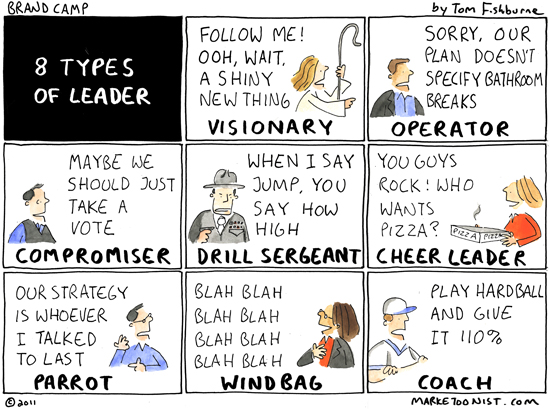The Way We Work Is Soul-Sucking, But Social Networks Are Not the Fix
With Twitter’s recent IPO filing, the most popular graph dominating conversation is the “interest graph.” Before that, it was the “social graph,” courtesy of Facebook. But we’re now seeing the emergence of a third important graph: the work graph.
Every minute we spend on work about work is a minute we’re not doing work. But no one is able to read or track everything. Even if they could, it’s soul-sucking.
It’s important not just because we spend nearly half our waking hours at work, but also because of the amount of time we spend not doing our actual job — the thing we’re great at — like writing code, or designing products, or whatever it is we’re hopefully passionate about.
Instead, we spend that time sitting in meetings, reading email (30 percent of our time, according to McKinsey), tracking down information someone else already has (20 percent of our time), and so on. It’s the friction of keeping everyone on the same page — the status updates, the project management — just to ensure the left hand knows what the right hand is doing. In fact, the average knowledge worker spends most of their working day doing this kind of “work about work.”
And we’re damned if we do, damned if we don’t: Every minute we spend on work about work is a minute we’re not doing work. But we can’t just stop, because this coordination is critical to the success of any endeavor with many moving parts.
The Problem: Work About Work
If we sat down and read every email in everyone’s inboxes, took notes in every meeting, lurked in every chat room, and then carefully kept everything up to date, we’d be able to answer questions like, What are all the steps left between now and the next project? Who’s responsible for each step? Which tasks are high priority, and which can wait until later? Where are all the files and conversations needed to do this particular activity?
Or, Why did we decide that thing six months ago that’s affecting what I’m trying to do right now? Heck, What should I be working on right now?
But no one is able to read/note/track/lurk on everything. Even if they could, it’s soul-sucking (at least, it was for me). And this work about work — and the resulting confusion around not knowing what’s expected of us — contributes to disengagement, resulting in billions in lost productivity. Every year.
It seems crazy that 99% of companies lack a single place to track all of this, a definitive source of “truth” about everything they’re working on. Crazier still given that $304 billion will be spent on enterprise software this year, much of it — like enterprise social networks — purporting to solve these problems. The problem with many of these approaches is that they’re just ports of earlier technologies designed for connecting people, not for coordinating work.
Yet there’s a way to work together with less effort, and it requires harnessing the work graph. Whereas a social graph maps people and their relationships, a work graph centers around the work.
Email? Sigh.
Right now, some (but not all) of the answers to the questions above are painfully dispersed across hundreds of discussion threads, locked in different people’s inboxes.
Considering that as recently as 20 years ago getting a company “on the same page” required physically distributing a memo or getting everyone in the same room, email is an incredible invention.
Did they really spend all frickin’ day sitting in front of Gmail and Outlook?
But email was designed as an upgraded version of the post office. It wasn’t built to enable people to work together in sophisticated ways toward ambitious goals. Surely someday people will look back on us with the same awe, wonder, and sympathy that we look back on previous times: Did they really spend all frickin’ day sitting in front of Gmail and Outlook?
Which is why there have been many attempts at transcending the limits of email, from better clients to group chat. Mailbox, for example, is a beautiful product I use every day that relieves some of the annoyances around personal email triage. But ultimately, it’s lipstick … and email’s still a pig. Meanwhile, products like HipChat are useful for what they are — but are even less structured and more prone to noise than email, especially when it comes to coordinating work.
Meanwhile, the concept of enterprise social networks — and that what works on Facebook will work for businesses — has certainly been appealing. (Not to mention that it creates an enviably straightforward product design roadmap for companies like Microsoft’s Yammer and Salesforce’s Chatter teams: just clone Twitter’s and Facebook’s features, one by one). Such networks do have some advantages over email.
But they are small, incremental improvements. It’s an indication of just how bad the status quo is that even small Band-Aids can represent a billion dollars’ worth of value.
We Can (And Need To) Do Better
Our personal and professional lives, even if they overlap, have two distinct goals — and they require different “graphs.”
For our personal lives, the goal is love (authentic interpersonal connection), and that requires a social graph with people at the center. For our work lives, the goal is creation (working together to realize our collective potential), and that requires a work graph, with the work at the center.
Don’t get me wrong: Human connection is valuable within a business. But it should be in service to the organizational function of getting work done, and doesn’t need to be the center of the graph.
In more specific computer science terms, a social graph consists of people (the nodes); information about the people (metadata on the nodes); the relationships between the people (the edges between the nodes); and content shared across them (information flowing along the edges). A work graph consists of the units of work (tasks, ideas, clients, goals, agenda items); information about that work (relevant conversations, files, status, metadata); how it all fits together; and then the people involved with the work (who’s responsible for what? which people need to be kept in the loop?).
The upshot of the latter data structure is having all the information we need when we need it. Where the enterprise social graph requires blasting a whole team with messages like “Hey, has anyone started working on this yet?”, we can just query the work graph and efficiently find out exactly who’s working on that task and how much progress they’ve made. Where the enterprise social graph model depends on serendipity, the work graph model routes information with purpose: towards driving projects to conclusions.
Imagine having more clarity, sanity, confidence, time, and autonomy. Not drowning in email or worrying about whether the i’s are dotted and t’s are crossed. Not having to sit in status meetings or through annoying boss interruptions to find out what’s going on. Instead of worrying about delays or missing deadlines, we can focus on achieving goals and working together effortlessly.
At the heart of this is rethinking how we design our tools. We’ve been able to get by until now on a patchwork of solutions and incremental improvements, but that’s just addressing a need. Attaining our future desires, however, will be about tools that are designed from the ground up for helping people work together.
Work should have meaning.
Just a little over a month ago, Nobel Prize-winning economist Ronald Coase — father of the theory for why we have companies at all — passed away, reopening many discussions about his work and what has changed since. These economics are no longer about just efficiencies, size, and costs, but about productivity, learning, value. Our work tools must help unlock these higher order qualities.
Work should have meaning, and a work graph should support that by automating the high friction and coordination aspects of work — allowing us to focus on the creative (and therefore un-automatable) parts of work. That’s the way work in the 21st century should be, enabling groups of people to do great things in the world, and, ultimately, help humanity thrive.
Original article writen by Justin Rosenstein and published on wired.com 2013.







